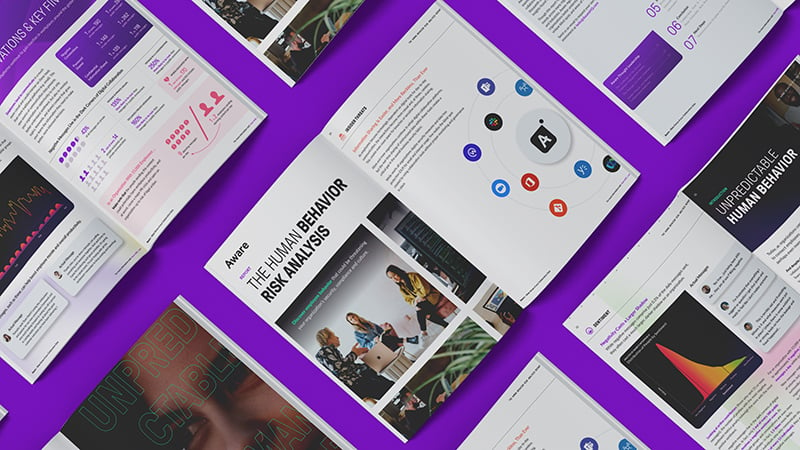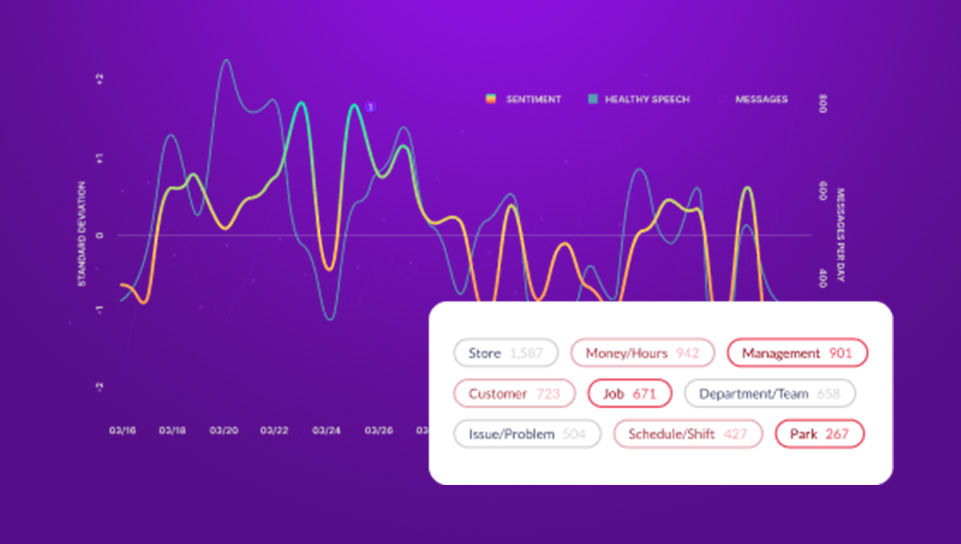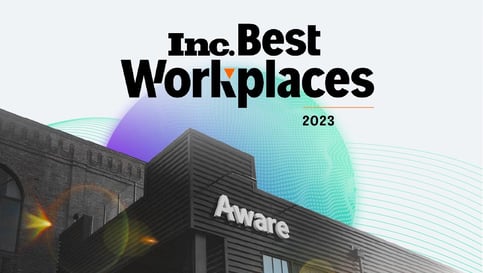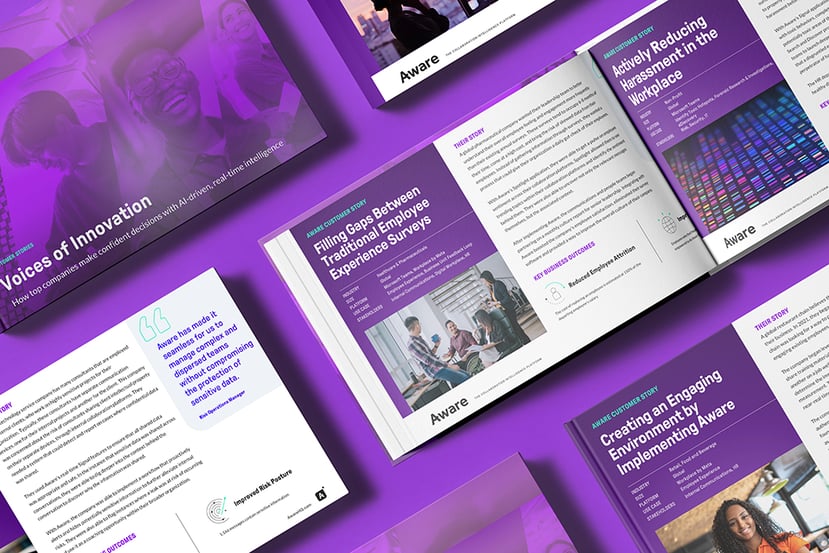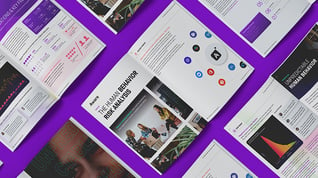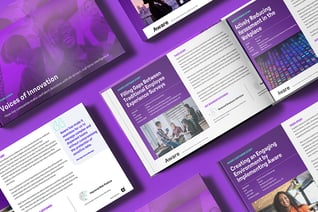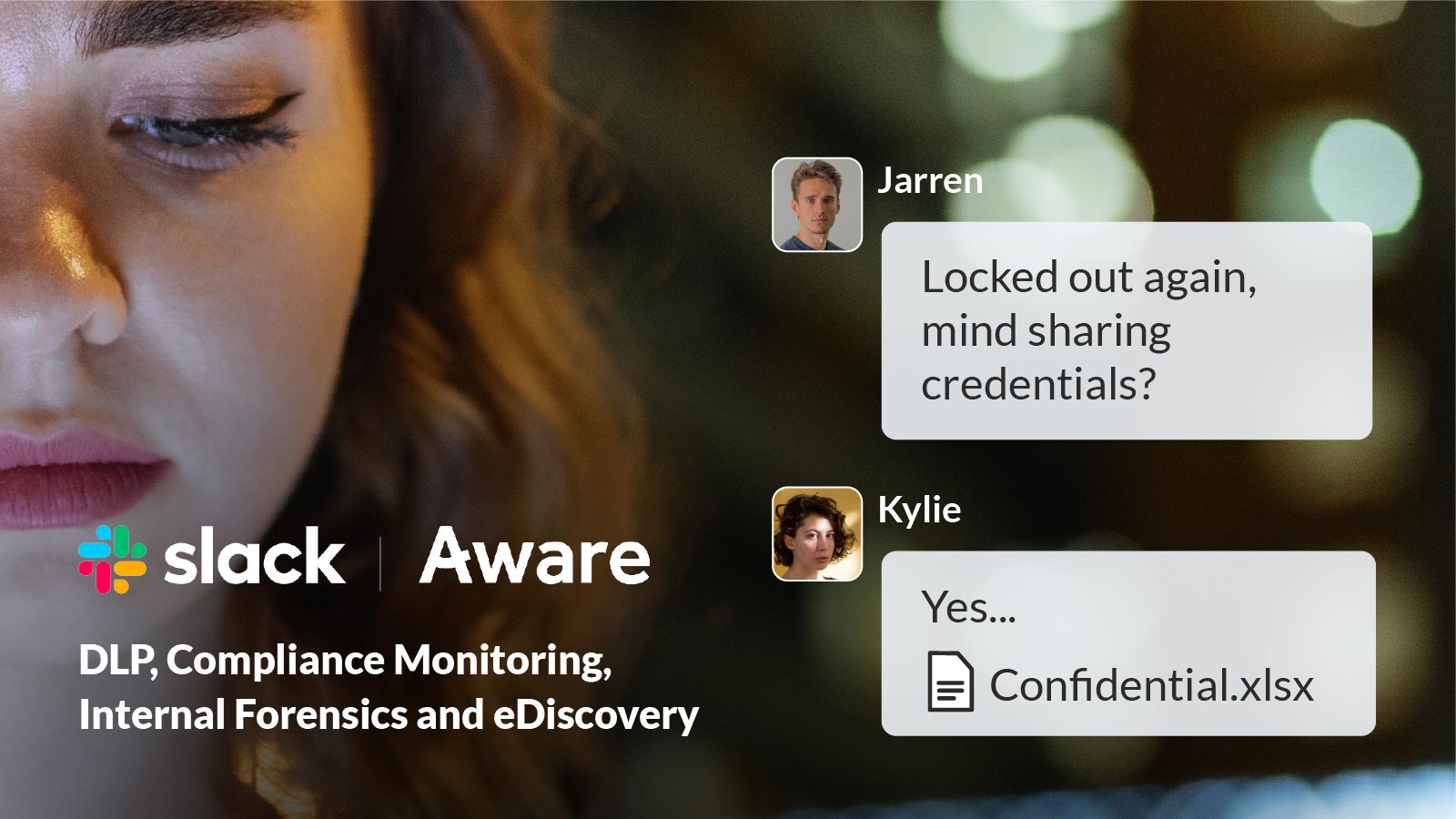Top 10 Slack Security Best Practices to Safeguard Your Workplace Collaboration
by Aware
Information security is an ever-present challenge in the digital workplace, and never more so than in collaboration tools like Slack. In this blog post, we explore the security measures Slack employs, discuss best practices to protect your workspace, and address common concerns related to data privacy and encryption. You’ll also learn how Aware supports information security in Slack and unlocks incredible value in the form of advanced business intelligence insights.
To learn more about Slack's security features and practices, download our comprehensive whitepaper on Mitigating Data Risks in Slack.
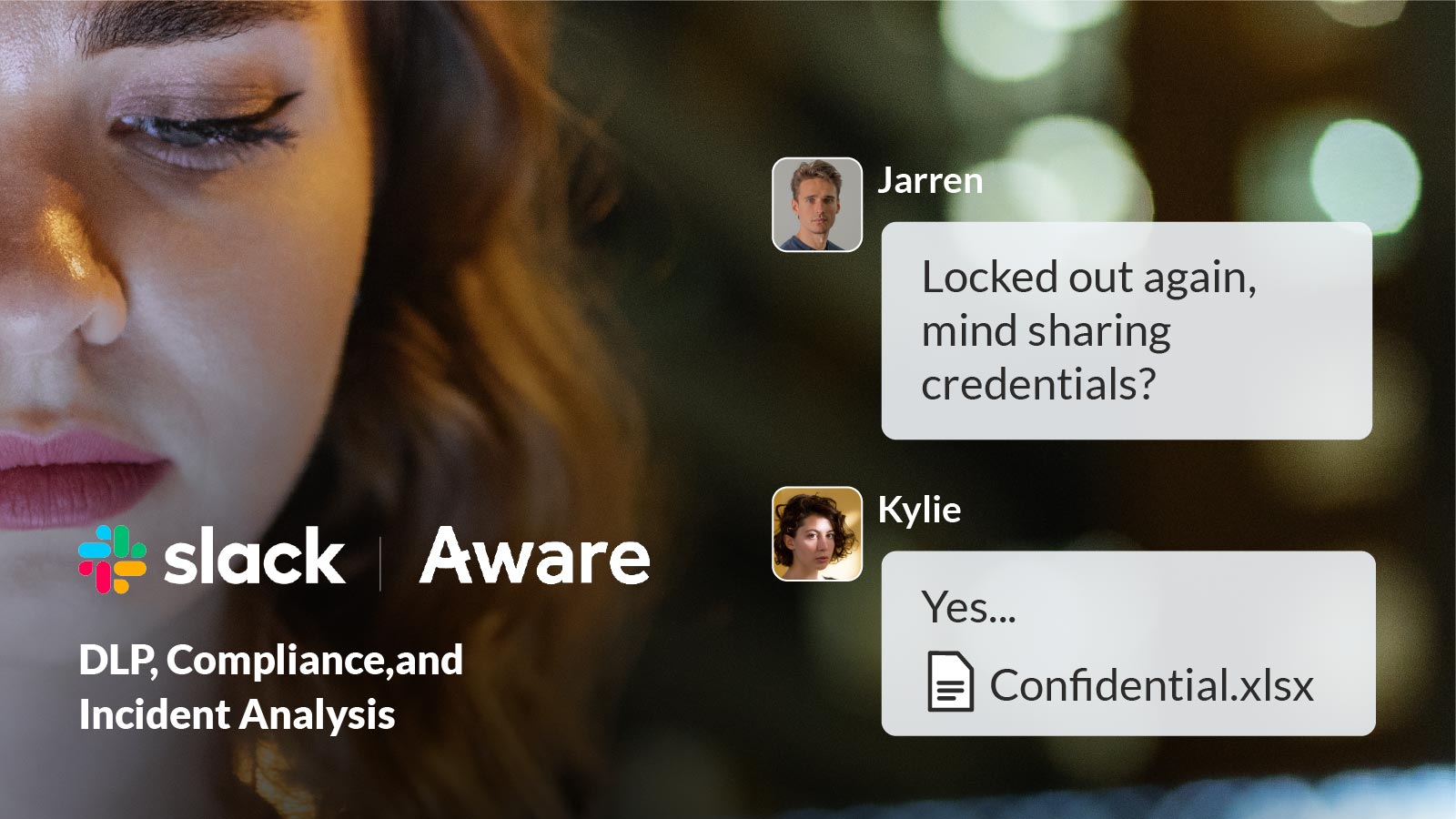
A leader's guide to compliance adherence, DLP, and search for Slack
Contents
- Is Slack secure?
- How Does Slack Handle Security and Manage Data?
- How can Slack Users Keep their Digital Workplace Secure?
- Top 10 Slack Security Best Practices
- Use 2FA in Slack
- Implement SSO for Slack
- Verify Slack User Emails and Domains
- Introduce Slack Guest Accounts
- Set Slack Session Durations
- Deactivate Old Slack Accounts
- Vet Slack Bots and Apps
- Create Private Slack Channels
- Define and Enforce Acceptable Use Policies for Slack
- Educate Employee on Information Security Best Practices
- Slack Security FAQs — Top Questions from Infosec Leaders
- What's the Difference Between Slack Public Channels vs. Private Channels vs. DMs?
- Can My Boss Read My Slack DMs?
- What Information Does Slack Save from My Organization?
- Does Slack Use End-to-End Encryption?
- What Security Certifications Does Slack Have?
- Bonus: 5 More Ways to Enhance Slack Security with Aware
Is Slack Secure?
Slack users benefit from many native features designed to safeguard their data. Slack utilizes industry-standard security practices and encryption protocols and employs a dedicated security team to continuously monitor and enhance their security infrastructure.
While no system is entirely immune to threats, Slack takes security seriously and provides users with tools to enhance the protection of their workspaces. Ultimately, however, the overall security of your workplace Slack environment depends on the security controls implemented by admins, and the behaviors of the users within that space.
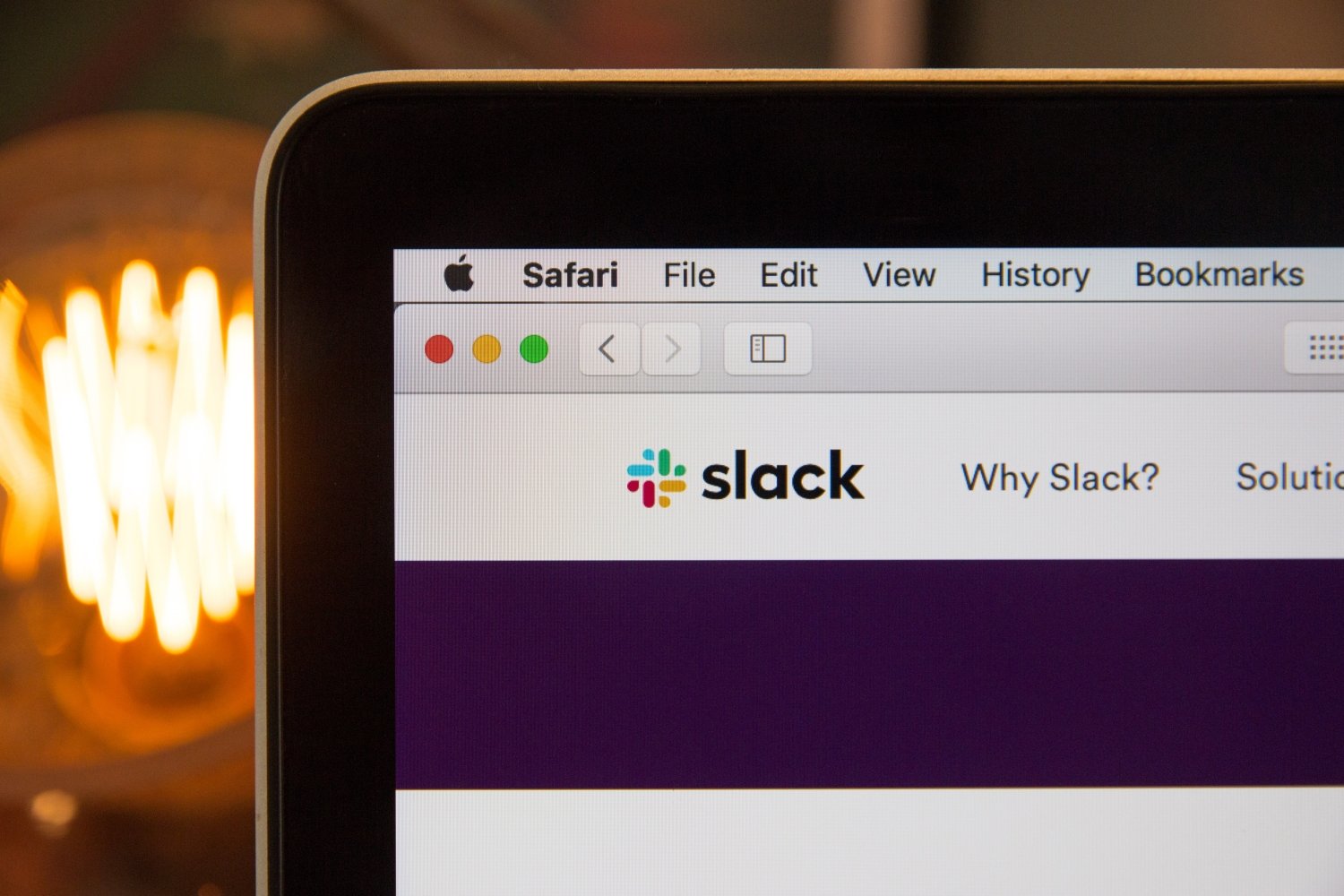
How Does Slack Handle Security and Manage Data?
User data in Slack is encrypted both in-transit and at-rest, using industry-standard protocols including TLS 1.2, AES256 encryption, SHA2 signatures, and FIPS 140-2 compliant standards. Slack also maintains a dedicated security team that continuously monitors and audits their systems for vulnerabilities. Additionally, Slack ensures regular data backups and disaster recovery measures to minimize data loss.
How can Slack Users Keep their Digital Workplace Secure?
To preserve the security of their digital workplace, Slack users should implement strong security measures at administrator level and coach all employees and third-party users on acceptable use policies for Slack. Follow the top 10 Slack security best practices below to protect your people and your data while using Slack.
Top 10 Slack Security Best Practices
- Use two-factor authentication (2FA)
- Enable single sign-on (SSO)
- Verify user emails and domains
- Use guest accounts for third-party access
- Set session durations
- Deactivate old accounts
- Vet bots and apps
- Make confidential channels private
- Create and enforce acceptable use policies
- Educate employees on information security best practices
2FA in Slack
Two-Factor Authentication (2FA) enhances Slack security by requiring users verify their login twice before they gain access to the workspace. This ensures that even if their password is compromised, a hacker still can’t access the Slack environment.
SSO for Slack
Another popular security measure for Slack is Single Sign-On (SSO), which lets users authenticate their login using a centralized identity provider such as Microsoft Azure Active Directory or Okta. SSO removes the need to manage multiple passwords and also protects the workspace by verifying users through a third-party identity infrastructure.
Slack User Email and Domain Verification
By verifying user emails and domains before granting access to Slack workspaces, administrators can ensure that only authorized individuals are admitted. This practice helps mitigate data risks in Slack from unauthorized access and phishing attacks, as it confirms the legitimacy of users' identities.
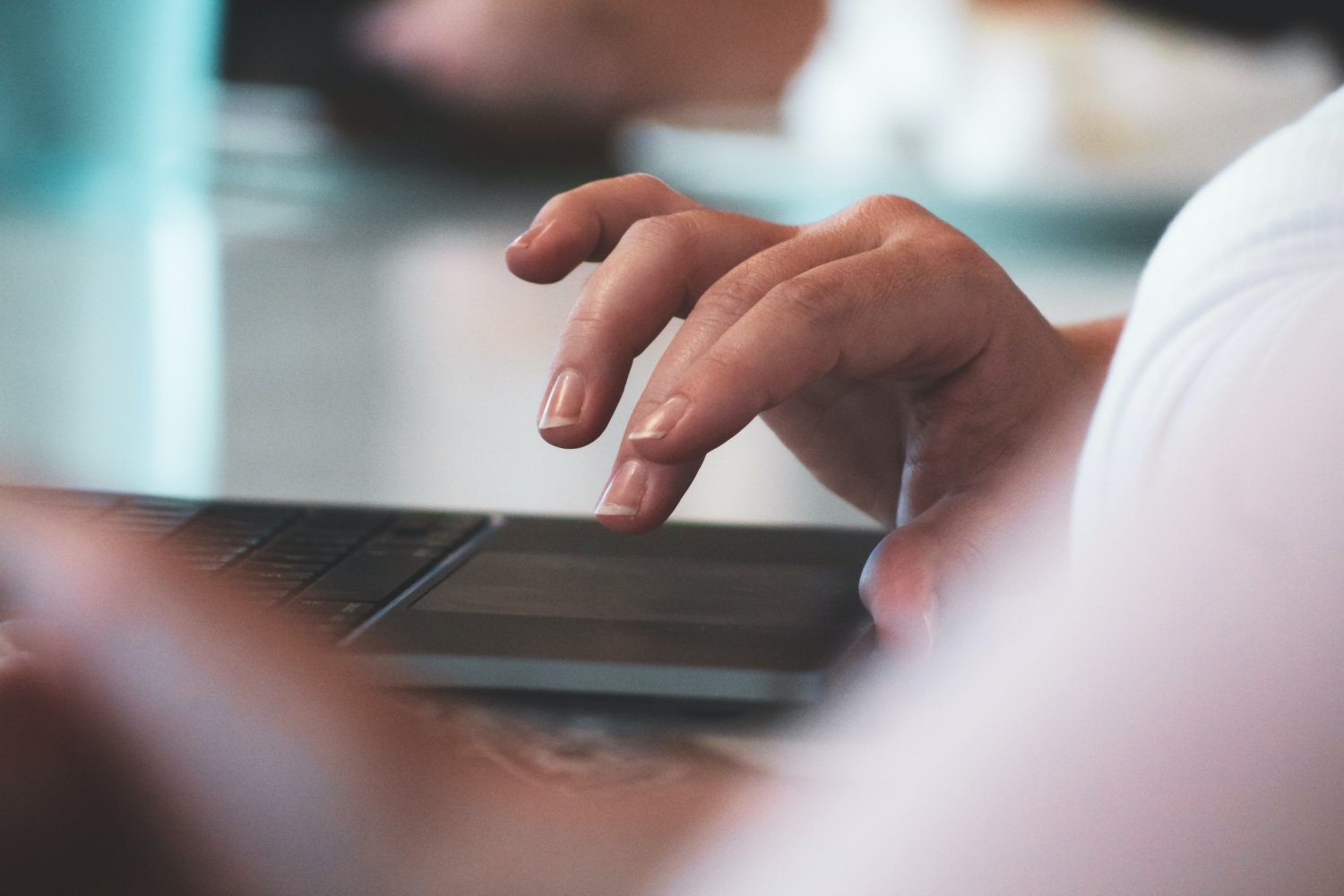
Slack Guest Accounts
Guest accounts allow external collaborators or contractors to access Slack workspaces without requiring full user accounts. By utilizing guest accounts, administrators can provide temporary access to third parties while maintaining control over their privileges and easily revoke their access when necessary.
Slack Session Duration
Setting session duration limits ensures that idle users are automatically logged out of Slack after a specified period of inactivity. This practice reduces the risk of unauthorized access if a user forgets to manually log out or if a device is left unattended, thereby enhancing the overall security of Slack workspaces.
Deactivate Old Slack Accounts
Regularly reviewing and deactivating old accounts, such as those belonging to former employees, contractors, or individuals who no longer require access, is crucial for maintaining a secure Slack environment. By promptly revoking access for inactive users, you minimize the risk of unauthorized access through dormant accounts.
Limit Slack Bots and Apps
Bots and apps can enhance productivity within Slack, but it is important to limit their installation and carefully vet their permissions. Grant access only to trusted and necessary integrations and periodically review their permissions. To reduce time spent reviewing bots and apps, administrators can limit workspaces to a list of pre-approved integrations or require manual approval for each new application.
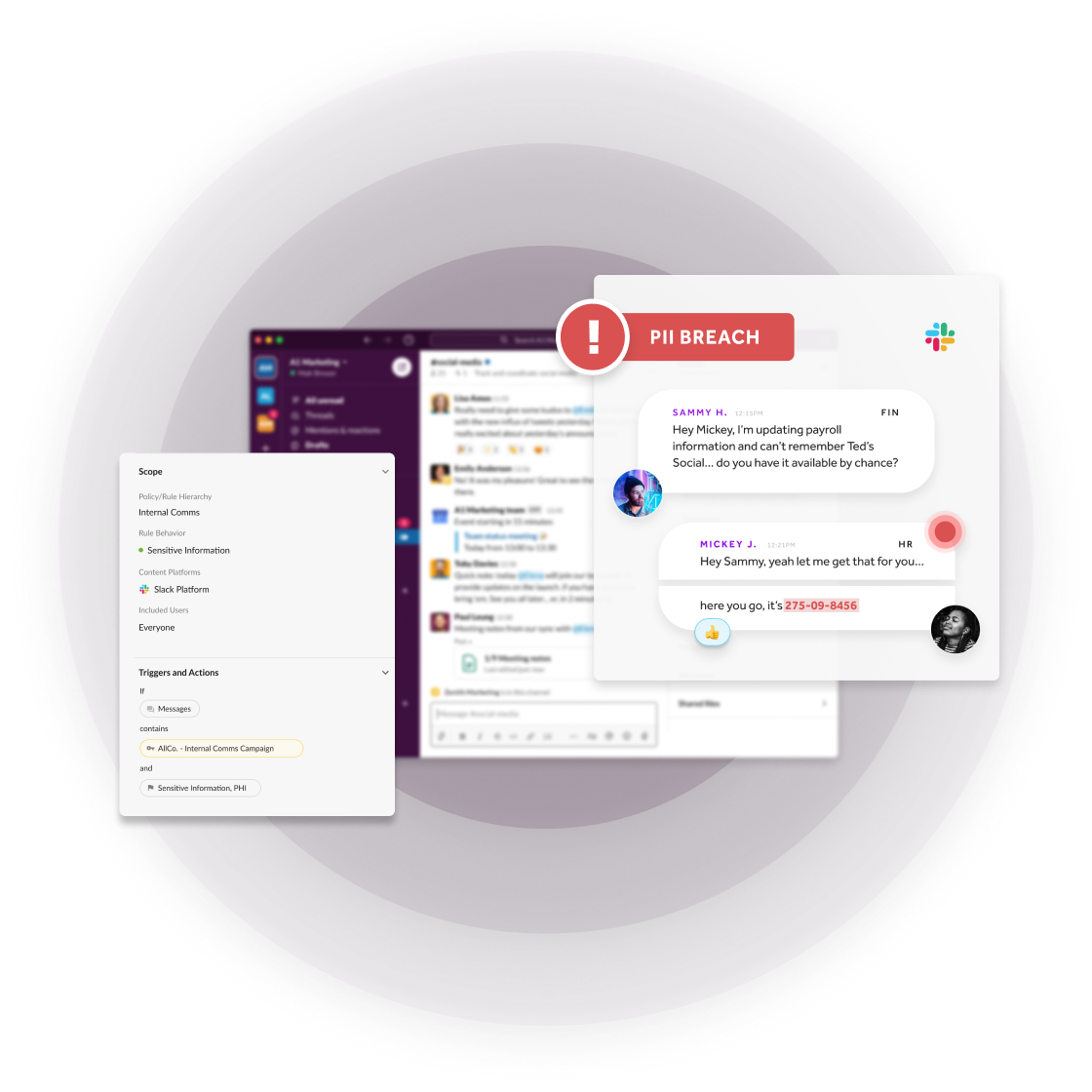
Private Slack Channels
Private channels in Slack provide a secure space to hold sensitive discussions by limiting access to authorized team members only. This makes private channels ideal for coordinating new projects, discussing mergers and acquisitions, or sharing confidential data. By utilizing private channels, administrators can ensure that confidential information remains protected and is not inadvertently exposed to unauthorized members.
Aware supports data protection in Slack with AI-infused analysis that identifies when proprietary or confidential information is shared in unauthorized channels. Using real-time tombstone redaction, Aware limits the visibility of sensitive data and maintains compliance within company Slack environments.
Acceptable Use Policies for Slack
Establishing clear and comprehensive acceptable use policies within your Slack workspace helps set expectations for users and defines appropriate behavior and data usage guidelines. Regularly communicate and enforce these policies to foster a security-conscious culture and ensure that employees understand their responsibilities in safeguarding sensitive information.
Using Aware, information security and compliance officers enforce acceptable use policies in Slack with real-time Slack workspace moderation backed by industry-leading natural language processing (NLP). Aware can detect inappropriate behavior or file sharing as it happens, remove infringing content, and automatically coach employees on acceptable use or inform administrators of repeated incidents of noncompliance.
Employee Information Security Best Practices
Regularly conducting training sessions to educate employees about information security best practices is crucial for mitigating risks all across the digital workplace. By providing guidance on recognizing phishing attempts, avoiding suspicious links, and practicing safe browsing habits, you empower employees to be active participants in maintaining the security of your Slack workspace.
Learn more with our free whitepaper:
Implementing these Slack security top 10 best practices can significantly enhance the security of your workspace and protect sensitive information. Features like 2FA and SSO, combined with regular education and adherence to security policies, create a secure environment that fosters collaboration and productivity while safeguarding your organization's data.
Slack Security FAQs — Top Questions from Infosec Leaders
What else do infosec and IT leaders need to know about risk management and security in Slack? Here’s their top frequently asked questions and answers.
What's the Difference Between Slack Public Channels vs. Private Channels vs. DMs?
In Slack, public channels are open to all members of a workspace and are designed for collaboration and discussions relevant to multiple team members. Private channels restrict access to authorized team members only, making them suitable for confidential or sensitive discussions. Direct Messages (DMs) are one-on-one or small group conversations that are not visible to other members of the workspace.
Can My Boss Read My Slack DMs?
Generally, managers cannot read your Slack Direct Messages (DMs) unless you choose to share them voluntarily. DMs are private conversations between specific individuals or small groups, and by default, they are not visible to anyone else in the workspace.
The exception to this is workspace administrators or owners using a Slack security application in conjunction with Slack Enterprise Grid. Certain information security, data loss prevention (DLP), and eDiscovery apps can access direct messages. Use of these applications should be restricted to a small number of appropriate users, and only for limited purposes such as early case assessment or to resolve internal investigations.
This doesn’t mean that users of Slack free, Pro, or Business+ accounts can send DMs in complete privacy. Slack does provide records of all messages, including DMs, in response to employer requests it deems appropriate, or to comply with legal demands.
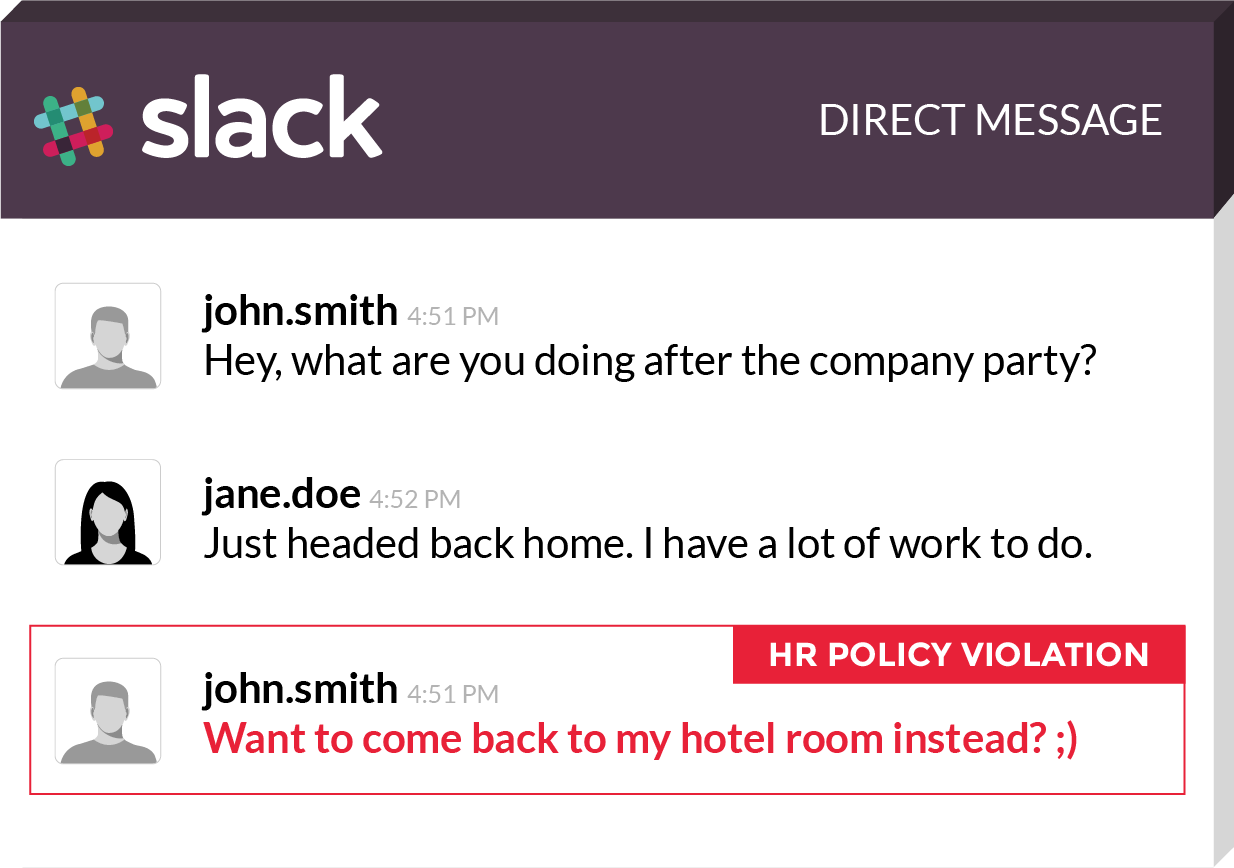
What Information Does Slack Save from My Organization?
Slack saves user-provided information such as usernames, email addresses, and profile pictures. It also retains messages, files, and other content shared within the platform. Additionally, Slack logs metadata related to user activity, including login times, IP addresses, and device information. However, Slack does not mine or sell user data for advertising purposes, and only shares data with third parties by consent.
Does Slack Use End-to-End Encryption?
Slack does not currently offer end-to-end encryption for messages and files shared within the platform. While data is encrypted during transmission and at rest, it is important to note that Slack retains the ability to access and decrypt user data as part of their operational procedures and legal obligations.
What Security Certifications Does Slack Have?
Slack holds several security certifications, including SOC 2 Type II, ISO/IEC 27001, ISO 27017, ISO 27018, and more. Additionally, Slack is GDPR, FINRA, SEC 17a-4, and HIPAA configurable, and GovSlack supports key government security standards, including FedRAMP High, DoD IL 4, and ITAR. These certifications demonstrate Slack's commitment to implementing and maintaining robust security controls, ensuring the protection of customer data and privacy.
Download our Quick Checklist for Collaboration Security to understand your information security needs in Slack
By implementing these Slack security best practices and understanding how Slack handles security and manages data, you can confidently leverage the platform for collaborative work while maintaining the highest standards of data protection and privacy.

Bonus: 5 More Ways to Enhance Slack Security with Aware
Aware helps information security leaders to secure their Slack workspace with a comprehensive suite of security features and AI-infused analytics. Visualize risk and opportunities across the entire digital workplace from a single pane of glass, only with Aware. Here’s just five of the ways leading organizations use Aware to enhance their Slack security:
- Proactively Identify and Mitigate Risky Behavior
- Automatically Enforce Acceptable Use Policies
- Identify and Notify Leaders of Potential Data Leaks
- Surface Harassment and Toxicity with Industry-Leading NLP
- Reveal Real-Time Business Intelligence Insights
Proactively Identify and Mitigate Risky Behavior
Aware ingests Slack data in real time via API, capturing a complete record of all messages in an immutable, searchable archive — including revisions and deletions. Smart algorithms continuously analyze messages to detect restricted data and immediately tombstone violating messages to protect exfiltration. Examples of the information Aware can detect include:
- Personally identifying information (PII)
- Payment card industry data (PCI)
- Protected health information (PHI)
- Intellectual property (IP)
-min.png)
Stop wasting time with JSON exports. Get fast, effective eDiscovery for Slack from Aware
Automatically Enforce Acceptable Use Policies
Acceptable use policies for Slack go beyond safeguarding restricted or protected information to include codes of conduct regarding safe-for-work language, harassment, and toxicity. Digital messaging tools such as Slack encourage informality between employees that can spill over into unwanted or offensive communications without appropriate guardrails.
Aware imposes those guardrails using industry-leading natural language processing (NLP) and sentiment analysis to uncover noncompliant messages and coach employees in real time whenever a violation is detected.
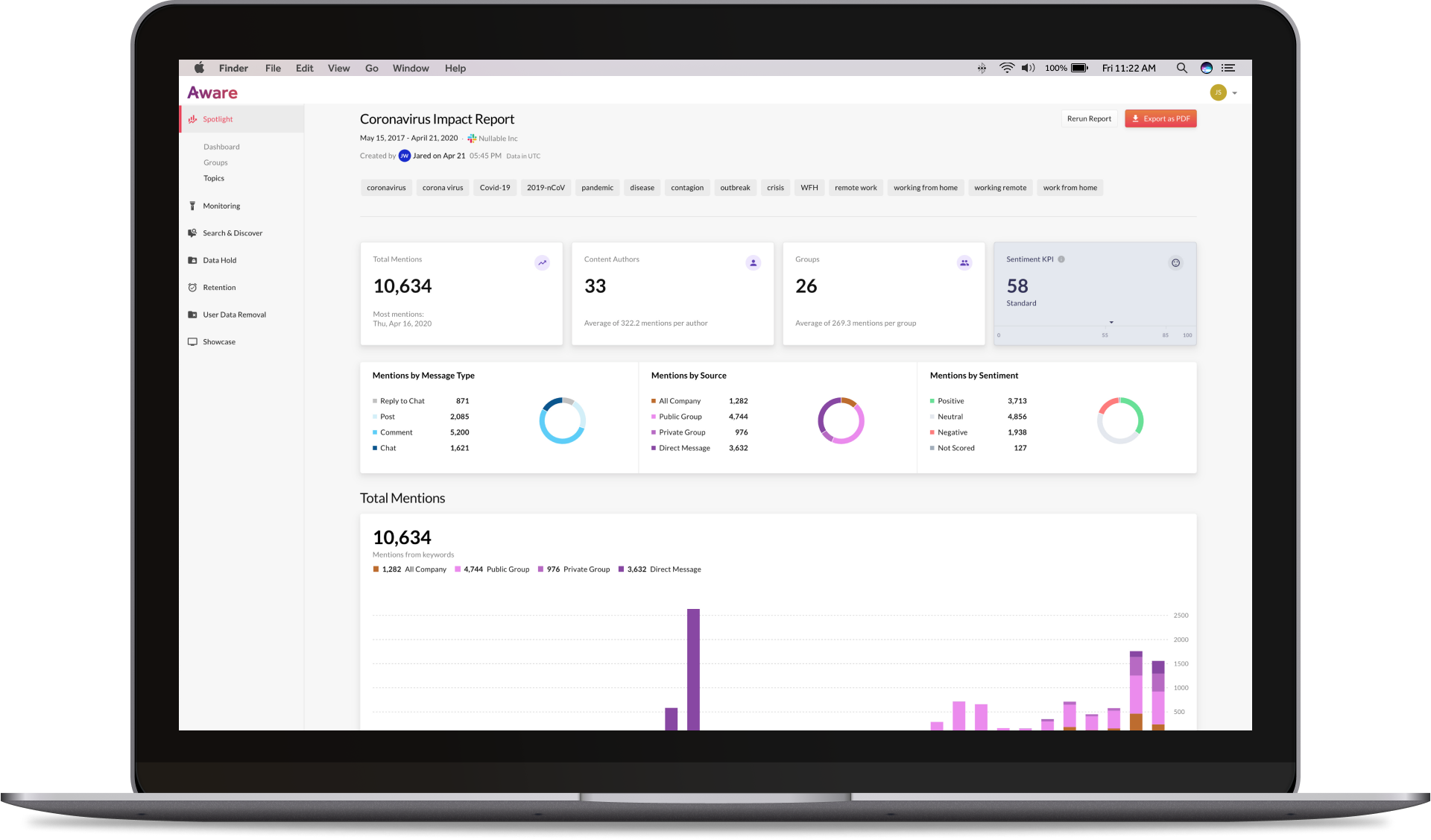
Identify and Notify Leaders of Potential Data Leaks
Asynchronous collaboration tools like Slack provided new opportunities for malicious insiders to exfiltrate data onto devices beyond the organization’s control. Aware’s collaboration intelligence platform automatically detects passwords, code, and unauthorized file uploads across the Slack environment. When unauthorized content is detected that can indicate a data breach, Aware can automatically tombstone infringing messages and flag the event for review by workspace administrators.
Surface Harassment and Toxicity with Industry-Leading NLP
Aware’s natural language processing (NLP) and sentiment scoring outperforms all leading competitors, including Microsoft and Google. Designed and trained on millions of real collaboration messages, Aware’s AI/ML platform understands the nuances of short-form, informal collaboration datasets.
Outputs are normalized for each organization, providing highly individualized results that show at-a-glance when sentiment is suffering, or toxicity is taking hold within a workplace. Using these real-time insights, business leaders can improve top-down messaging, protect their company culture, and address downturns in sentiment before they impact the company.
Reveal Real-Time Business Intelligence Insights
Nobody knows your company and customers better than your people. Aware provides executives with a direct line from the breakroom to the boardroom, delivering authentic, actionable insights from employee voices at scale. Innovative organizations have harnessed these insights to streamline operations, improve security and compliance, and elevate their employee experience.
Download our free e-book to learn more about visionary leaders using employee listening business intelligence from Aware to thrive in the future of work.
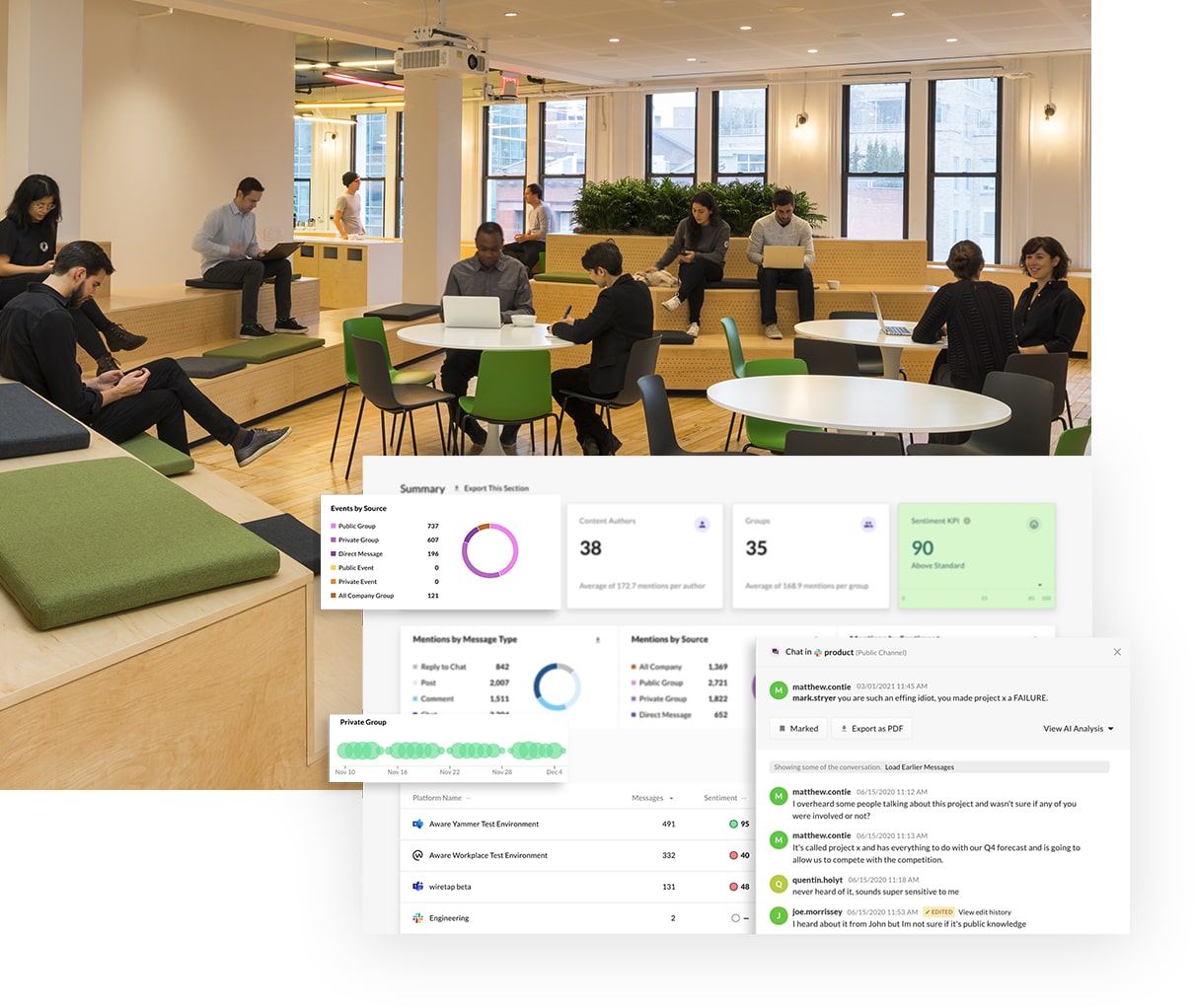
Final Thoughts
In an era where data security is paramount, Slack provides a range of security measures and best practices to protect your workspace and sensitive information. By implementing measures such as two-factor authentication, single sign-on, and careful user management, you can enhance the security of your Slack environment.
Aware enhances Slack through real-time AI analysis that reduces security risks, ensures compliance, and delivers a continuous stream of valuable business insights that can transform every aspect of how an organization runs.
